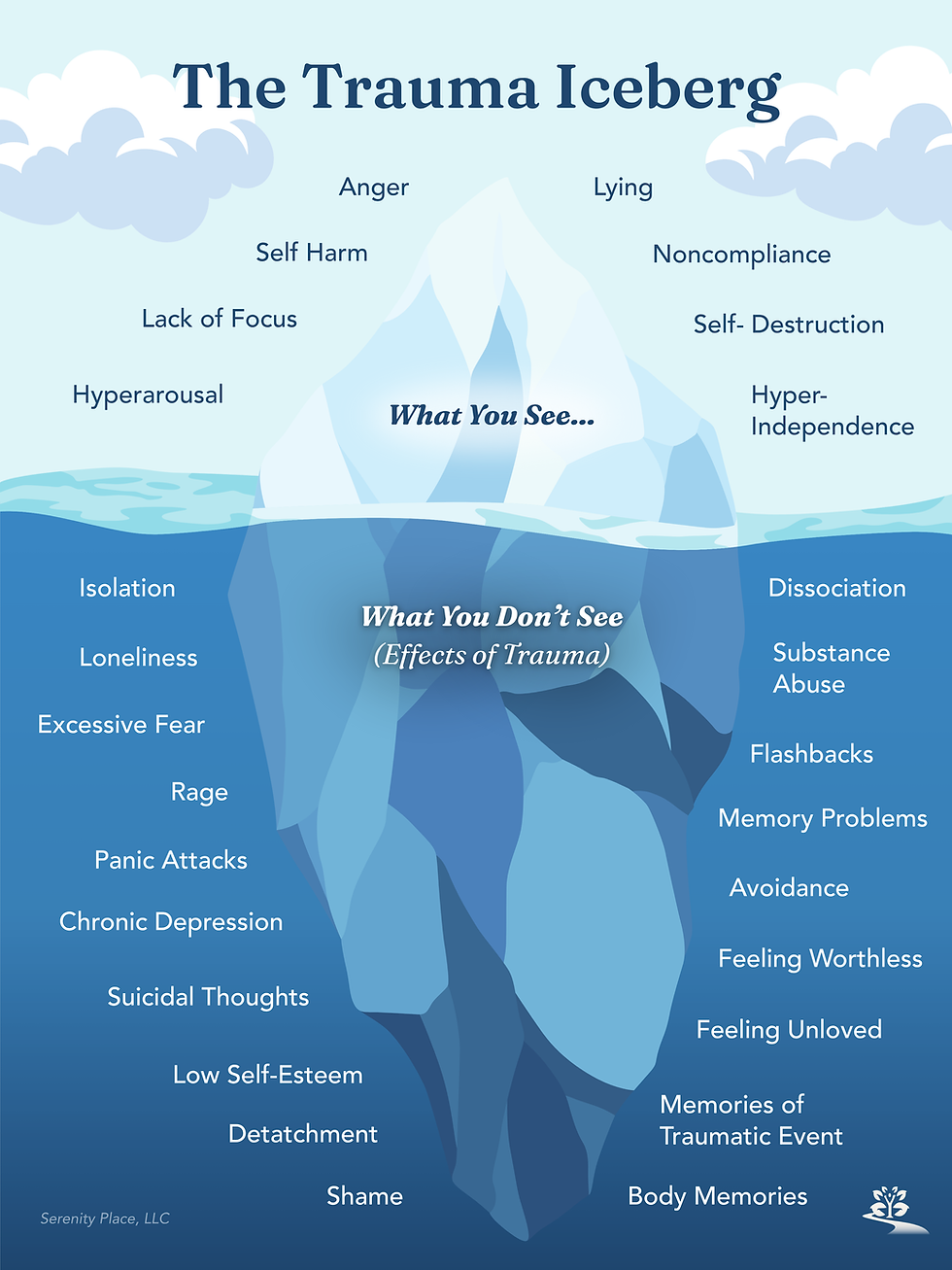Understanding the Trauma Iceberg: What’s Beneath the Surface
- Sophia Palma

- Aug 4, 2025
- 2 min read

When we think of trauma, we often picture its more visible signs—anger, self-harm, defiance, or difficulty focusing. But what if those behaviors are just the tip of the iceberg?
At Serenity Place, we understand that what’s visible to others is often only a fraction of someone’s experience. The “Trauma Iceberg” is a powerful visual that helps illustrate this reality. Above the waterline are the behaviors people might notice, such as outbursts, risk-taking, hyper-independence, or seeming disengagement. These outward signs can be misunderstood, judged, or dismissed as character flaws.
But beneath the surface lies what’s really going on—what you don’t see.
What Trauma Often Looks Like Internally:
Below the surface, individuals may be battling overwhelming isolation, panic attacks, chronic depression, or deep feelings of shame. They might be living with persistent fear, painful flashbacks, body memories, or the sense that they are unlovable or worthless. These aren’t things most people openly share. In fact, many who are struggling with the effects of trauma have learned to hide these symptoms for survival.
This is why trauma-informed care matters.
When clinicians, educators, families, and communities recognize the deeper roots of behavior, we can respond with more compassion and support. Instead of asking, “What’s wrong with you?” we can begin to ask, “What happened to you?”—a question that opens the door to healing.
Moving Toward Healing
Understanding the trauma iceberg can help reduce stigma and increase empathy. If you or someone you care about is showing signs of struggle, remember: those visible behaviors may be a coping mechanism for something much deeper.
At Serenity Place, our therapists work with individuals of all ages to uncover and gently address what lies beneath the surface. Whether you're dealing with trauma from childhood, grief, major life transitions, or anything in between, healing is possible, and you don’t have to do it alone.
If you’re ready to explore what’s beneath the surface, we’re here to help.




Comments